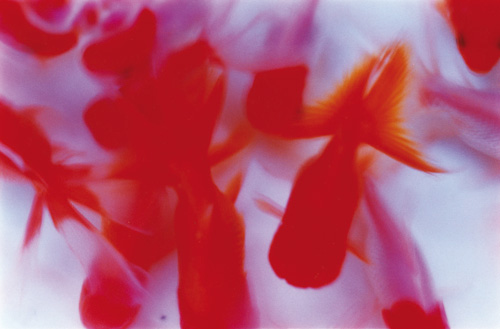
Galerie Priska Pasquer Goebenstr. 3 50672 Cologne Allemagne
Galerie Priska Pasquer is pleased to present the work of Japanese artist Mika Ninagawa. The exhibition includes photographs from her "Liquid Dreams" and "Acid Bloom" series.
Mika Ninagawa (* 1972) is one of her generation's most renowned and productive artists. Since 1997, she has published 35 photo books and produced television advertisements, CD covers and a music video, as well as directing the feature-length film "Sakuran", which was shown in the special programme of the Berlin International Film Festival 2007. A retrospective exhibition of the artist's work opened recently in Tokyo and can be viewed in various Japanese museums up until 2010.
Mika Ninagawa began her career in the mid-1990s as a "girly photographer", a term given to a whole generation of young female photographers between the tender ages of 18 and 20 who used the camera as a means of documenting their own lives and that of their generation. But after just a short time, Mika Ninagawa decided to focus on other topics outside of her direct environment and developed her own visual language.
Mika Ninagawa's topics include flowers, goldfish, travel and portraits of stars from Japanese entertainment culture.
Her photography is characterised above all by the use of intense and exuberant colours, such as cobalt blue, pink and blood red which she uses to depict both the motifs and the backgrounds.
In her photography, Mika Ninagawa uses elements of Japanese and western pop culture, whether in the design of her motifs or in the extravagant colours of her photographs. For instance, she presents the actress Chiaki Kuriyama - known in the West as "Gogo Yubari" from the film "Kill Bill: Vol. I" - as a softly smiling young woman with a red hair slide and a satin green dress against a green background, surrounded by red butterflies and holding a deer - a shot that seems to owe a considerable debt to Disney films.
By contrast, in her "Liquid Dreams" series (2004), Ninagawa devotes her photography to goldfish, a traditionally Japanese subject. The fish in the series are portrayed as grotesque individuals, as a shimmering mass or as elegantly floating aesthetic beings.
At first glance, Mika Ninagawa's work places her in the ranks of Japanese neopop artists, a genre that has gained particular prominence thanks to Takashi Murakami.
Even if artists such as Murakami create products such as T-shirts or watches for the mass market, this mainly occurs within the discourse on art and (Japanese) pop culture and the images of these artists are produced as art for the art and exhibition market.
In contrast to this, Mika Ninagawa's publications connect with a wider audience, although she is not afraid to cross the line and embrace kitsch. More than 200,000 copies of her books have been published.
However, Mika Ninagawa's work differs from that of neopop artists in that there is no subtext in evidence that says 'I use elements of pop culture, but it's art, not pop!'
Mika Ninagawa's work is pop and does not claim to be anything more and it is art because it goes beyond sheer consumability and a simple and direct satisfaction of the senses and emotions: the goldfish are goldfish, but they are also grotesque overbred beings, mutants in a world of images dominated by pop culture - and the flowers are like the title of the book "Acid Bloom" already suggests, intoxicated by their overwhelming presence and colours.
Mika Ninagawa, born 1972, graduated from Tama Art University, Tokyo in 1997. She lives and works in Tokyo.
In Nov - Dec 2008, the Tokyo Opera City Art Gallery presented the retrospective "Mika Ninagawa. Earthly Flowers, Heavenly Colors", which can be viewed 2009/2010 in museums in Iwate, Kirishima, Nishinomiya and Kochi.

